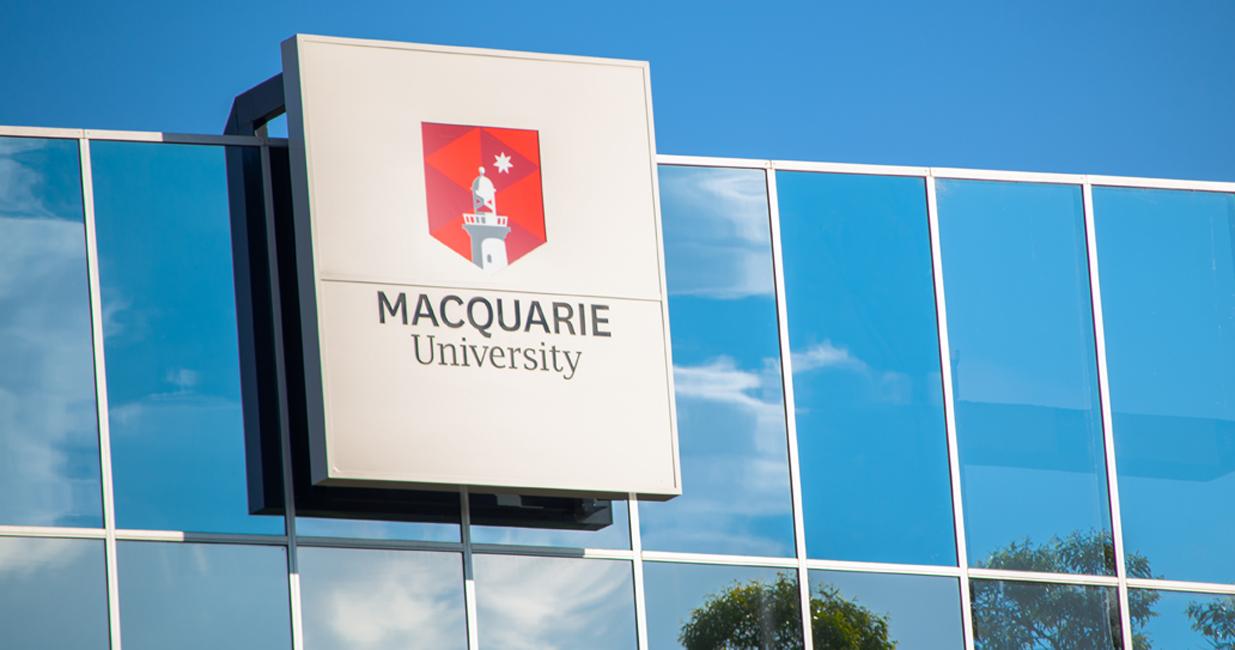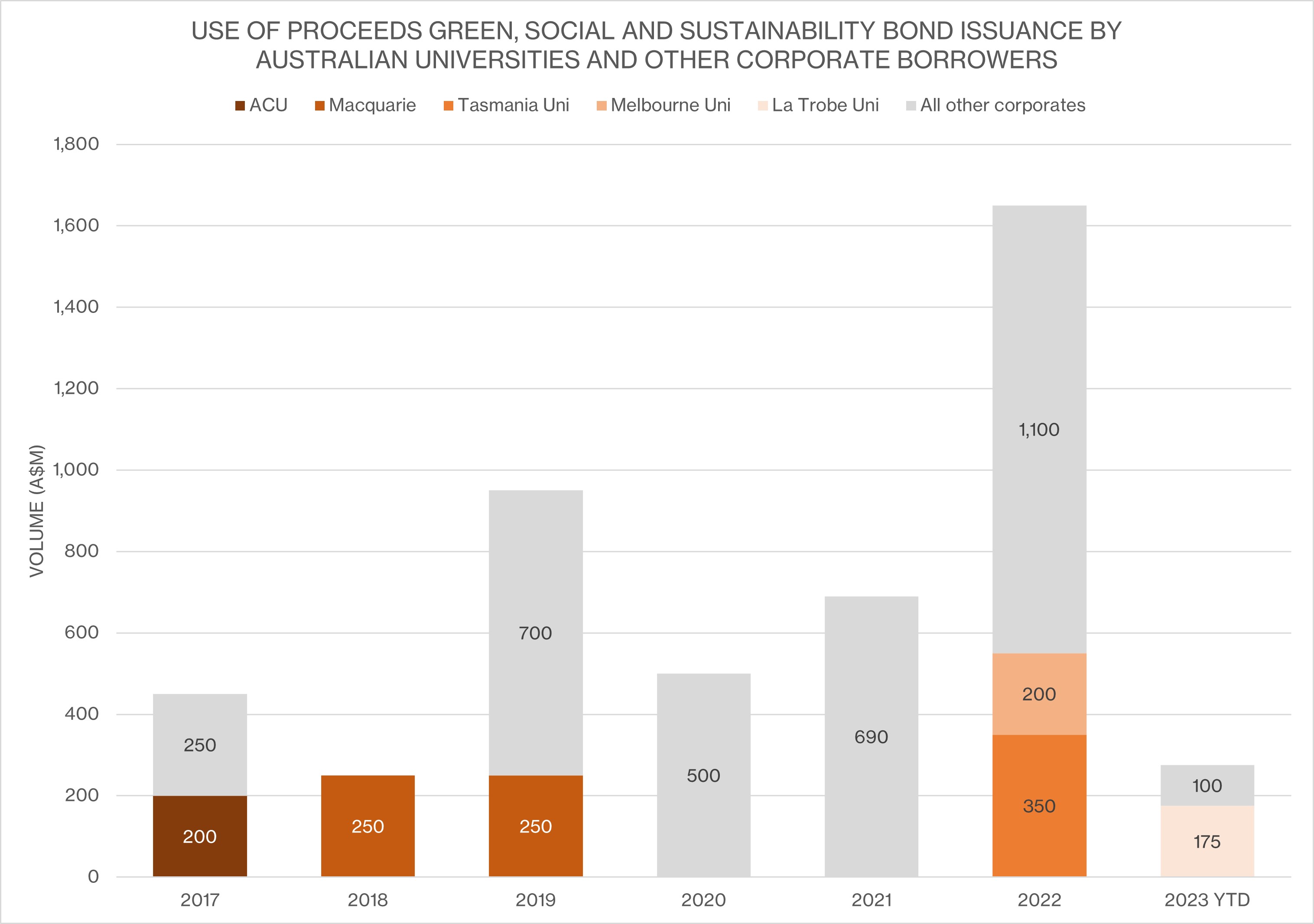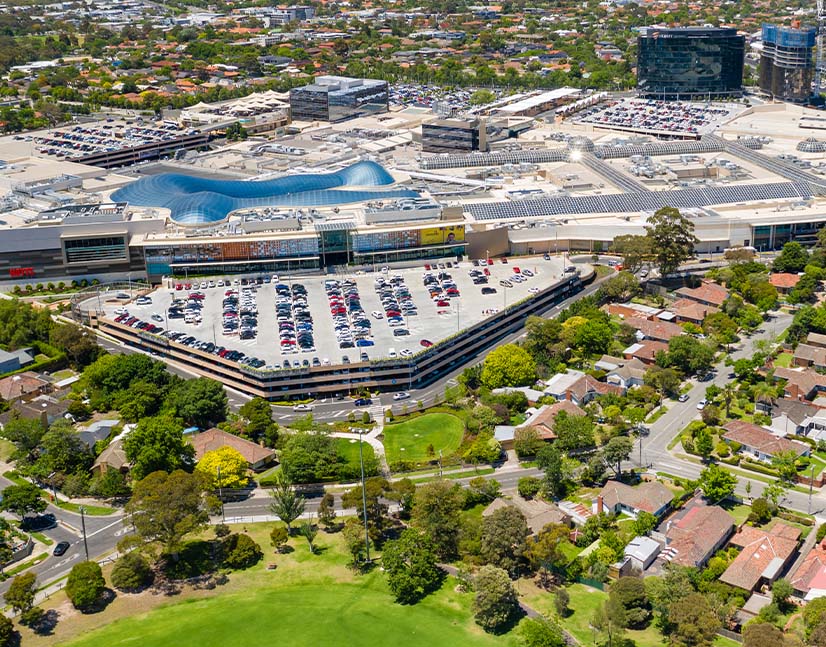
Macquarie University takes transparent approach in SLL debut
Macquarie University has plumped for full disclosure of the KPIs in its inaugural sustainability-linked loan, acknowledging that such an approach introduces reputational risk should it miss its targets but arguing that accountability is more important. The loan structure also takes steps toward tackling sustainability factors that are currently harder to measure.
The Macquarie University sustainability-linked loan (SLL) is a A$450 million (US$300.4 million) refinancing facility comprising A$100 million three-year and A$350 million five-year tranches. Commonwealth Bank of Australia (CBA), ANZ and Bank of China acted as sustainability co-ordinators and were joined by HSBC as the full lender group.
The lender has elected to make the SLL KPIs, which encompass social and environmental goals, publicly available (see table 1). The terms cover scope-one, scope-two and scope-three emissions, biodiversity, indigenous cultural safety, UN Sustainable Development Goals (SDG) awareness training for students and staff, gender equality, and development opportunities in STEM for underrepresented children.
TABLE 1. MACQUARIE UNIVERSITY SLL KPIs
| KPI | Sustainability performance targets |
|---|---|
|
KPI 1. Scope-one and scope-two emissions |
14% absolute reduction of scope-one emissions by 2028 from 2022 baseline1. |
| KPI 2. Scope-three emissions |
Measure2 and set reduction target of scope-three emissions by 2026. |
| KPI 3. Restoration of habitat including endangered Turpentine-Ironbark Forest |
Increase the high and very high integrity forest area by more than 25% by 20283. |
| KPI 4. Manawari Aboriginal cultural safety and online UN SDG training |
Completion of Manawari Aboriginal training by 80% of graduating students each year between 2025-28 and new staff each year between 2024-28. |
| KPI 5. Gender equality |
|
| KPI 6. Junior Science Academy programmes for underrepresented groups |
Expand deaf and hard of hearing programme to 72 enrolments (tripling programme size) per year by 2027. |
1. Measured on tax year annually (i.e. July through June) per National Greenhouse and Energy Reporting.
2. Incremental to preliminary ARUP Scope 3 Mapping (of 2021 emissions) undertaken in December 2022.
3. As measured by GIS software (refer page 62).
4. The WGEA 40:40 Vision aims to achieve a minimum of 40% women and 40% men in leadership positions.
Source: Macquarie University 25 July 2023
The decision to fully disclose the loan’s KPIs and sustainability performance targets is far from standard in the SLL space, where many borrowers have elected not to confront the reputation risk that could come from missing ambitious targets. Globally, questions have been raised about the level of ambition in sustainability-linked facilities – a situation exacerbated by limited disclosure that does not allow market participants that are not party to transactions to compare and judge deal structures.
The worldwide skepticism surrounding the sustainability-linked format, due to possibilities for greenwashing, has thus provoked market users to demand greater levels of transparency and disclosure on KPIs and impact reporting.
Madeleine Wilson, Sydney-based associate director, sustainable finance and ESG at CBA, tells KangaNews: “Markets have been wanting more disclosure on the specifics of SLL targets for a while. Macquarie University’s framework will delve into significantly more detail than is usually seen, providing stakeholders with greater visibility of what the university is trying to achieve and portraying the gravitas of the ambition of these targets.”
Macquarie University believes the SLL is a motivating instrument for its sustainability plans – and this outweighs any associated risk from public disclosure of its targets. “The reputational risk of not achieving our ambitious plan is absolutely there,” explains Ben Gray, Sydney-based deputy group chief financial officer at Macquarie University. “But we view our sustainability framework as a way to hold ourselves accountable to our community and stakeholders.”
He explains that having an SLL that aligns with the university’s goals creates an ongoing incentive to maintain sustainability reporting discipline in the budget process and ensures that it has the funding available to focus on, and clearly commit to, critical sustainability tasks.
Deal sources, meanwhile, insist the issuer’s willingness to disclose SLL details do not reflect a lack of ambition – as might be the case if the facility deployed KPIs that were easy to achieve under business as usual. Charles Davis, Sydney-based managing director, sustainable finance and ESG at CBA, says Macquarie’s strong stance on transparency about its SPT’s demonstrates its commitment to continued ambition. “Moreover the number of KPIs in the Macquarie University SLL is rare – this indicates the breadth of initiatives the borrower is undertaking and the level of ambition within them,” Davis adds.
DNV provided a second-party opinion on the deal, confirming that it aligns with the Asia-Pacific Loan Market Association’s Sustainability Linked Loan Principles.
SECTOR ENGAGEMENT
The Australian higher education sector has been a leader in sustainable debt finance locally. For instance, Australian Catholic University was the first local corporate sustainability-bond issuer, while La Trobe University became the fifth higher education institution to price a green, social or sustainability bond, on 31 July 2023 (see chart).

Source: KangaNews 31 July 2023
Macquarie University itself has brought two sustainability bonds to market, in 2018 and 2019, immediately after publishing its Sustainability Financing Framework. Using a format that incorporates social as well as environmental assets or – in the case of the SLL – targets made sense for a university that, Gray explains, sits on 126 hectares of Wallumattagal land. “Sustainability is a very deeply ingrained part of our sense of being and who we are,” he says.
Existing sustainability commitments also helped line Macquarie University up for sustainability-linked borrowing. Having baseline data available to measure outcomes against level of ambition was crucial to alignment with the SLLPs, Davis explains.
“The sustainability-linked format also aligns with the underlying social ethos of the university sector’s purpose, as institutions with an intrinsic focus on supporting education for communities and meaningful research,” Wilson adds.
However, deal sources say SLL borrowing may not imply future sustainability-linked bond (SLB) issuance by Macquarie University or its peers. This sector has struggled for momentum after a promising start at the turn of the current decade. Davis says the adjustments needed to move from loan to bond in a format investors are satisfied with are complicated.
He explains: “Some of the feedback we have received from investors is that two-way margin movements are not particularly palatable at this point in time, providing challenges to the products’ intent to incentivise issuers.”
Gray says the issuer is satisfied with its current mix of bank and capital market debt. Innovation may provide an incentive, as Gray adds that the university “aspires to hold its position as a market leader” by adopting new sustainable financing strategies that evolve.
FURTHER AMBITION
Wilson also notes the significance of Macquarie University’s decision to enter the SLL market several years after it began issuing use-of-proceeds instruments. “It is uncommon to see loans by organisations whose sustainability strategies are quite mature, such as Macquarie University,” she tells KangaNews. “This demonstrates to the market that SLLs can be used to incentivise further improvements no matter where a borrower is on its sustainability journey.”
The SLL sprung from aspirations that arose as part of an update to the university’s sustainability strategy, which it expects to publish in full by early next year. Gray reveals: “It made sense to roll this into our financing platform now and to be public with some of the aspirations so we can hold ourselves accountable.”
For instance, Macquarie University has already reduced its scope-one and scope-two emissions by 90 per cent over the past three years. Developing a new target required ambition in what will be achieved beyond this 90 percent – and Wilson notes that while the quantity of further reduction may not be as large the difficulty and ambition of reduction is often harder in the final 10 per cent.
The university’s remaining emissions rest heavily in scope-three and will be particularly challenging to achieve, deal sources reveal. “Scope-three is challenging because it requires changes to procurement processes and working with supply chain partners to influence them to better manage their emissions,” Gray explains. “When we look at the greenhouse gases we have left, addressing scope-three presents an important opportunity.”
Macquarie University started exploring the emissions in its supply chain during the COVID-19 affected years, Gray continues. This work revealed some hotspots that it has subsequently started to address. One of the SLL KPIs formalises this process by developing the baseline for scope-three emissions.
Scope-three emissions will be an activity-based target for the first two years of the loan. Such targets are useful when it is hard to quantitatively measure the target every year and for factors like biodiversity, Davis suggests. They are often coupled with other targets where the coordinator can provide a form of quantitative assessment.
Macquarie University collaborated with its financial and sustainability adviser, Grant Samuel, and its own Department of Natural Sciences when considering measurability in its biodiversity targets. It also sought to align with Society for Ecological Restoration Australia standards. The SPTs include a vegetation scorecard, removal of fences and increased weeding activities in various areas. Gray says this will improve the three levels of canopy in the university’s forest area.
Macquarie University has also pledged to reinvest any benefits it receives from the facility’s margin adjustments into scholarships for disadvantaged students. The borrower anticipates that A$500,000 of scholarships could be supported over five years.

WOMEN IN CAPITAL MARKETS Yearbook 2023
KangaNews's annual yearbook amplifying female voices in the Australian capital market.












